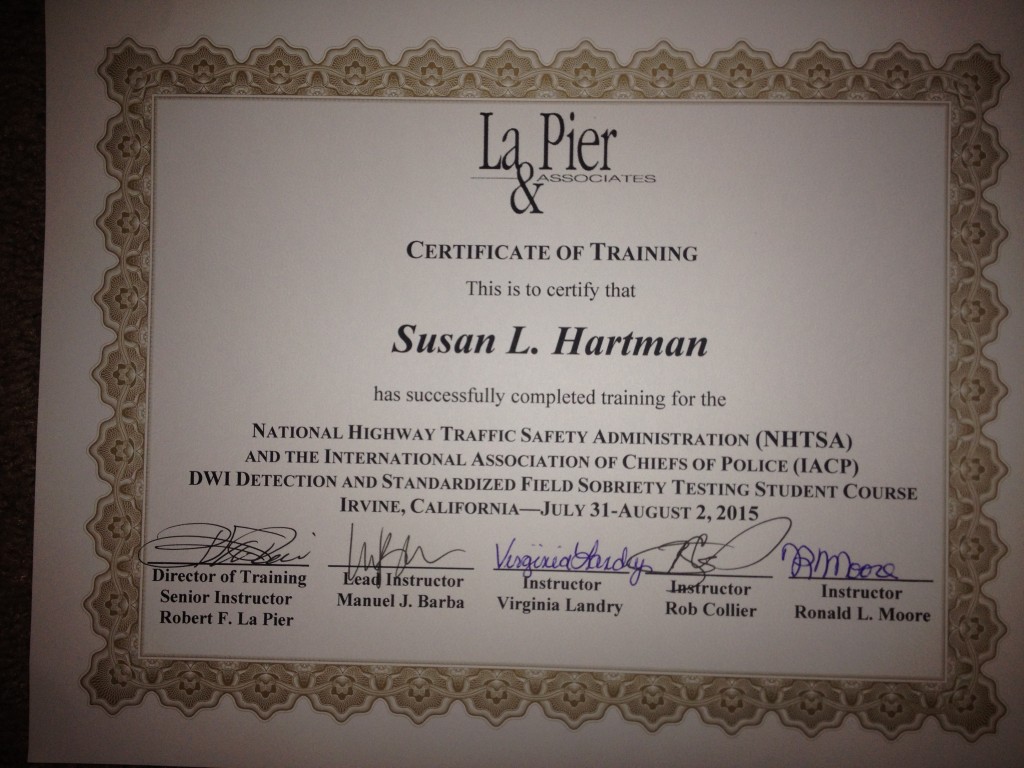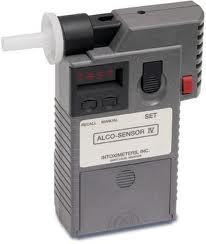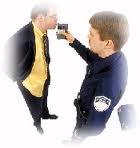The walk-and-turn test (WAT) is one of the three tests in the battery of field sobriety tests (FST’s) that the National Highway Transportation Safety Administration (NHTSA) recommends law enforcement use to evaluate a suspect to determine if they are under the influence, thus establishing probable cause to arrest for drunk driving.
Both the WAT and the one-leg stand tests are considered “divided attention” tests, where a person’s attention is on both mental and physical tasks. The third test in the battery is called the horizontal gaze nystagmus test (HGN), which tests the subject’s jerking or bouncing of the eye.
The walk-and-turn test if often referred to as the “walk the line” test. The officer first instructs the subject on how to do the test and then the test is performed. The officer is to explain to the suspect that s/he is to walk nine steps, heal to toe, with their arms at their sides, without stopping, while watching their feet the entire time, counting the steps out loud. Then the person is to turn on one foot and face back in the direction where s/he was before, and then walk another nine steps, heal to toe back to the original location.
While this is being done, the officer is looking for eight clues of impairment: 1.) The subject cannot keep balance while listening to the instructions; 2.) Begins the test before the instructions are done being given; 3.) Once the walking begins, the subject stops to regain balance; 4.) Does not touch heal-to-toe; 5.) Steps off the line; 6.) Uses arms to balance; 7.) Makes an improper turn; and, 8.) Takes an incorrect number of steps.
If the person is unable to stay on the line and steps off three or more times, or they are in danger of falling, the test is stopped, and the person fails this test.
Each clue is graded as one point even if the same clue is observed more than once. According to Stuster & Burns, the 1998 NHTSA study, if two clues are found, there is a .79% chance the person’s blood alcohol concentration (BAC) is .08% or higher. This still means that 2 out of every 10 people who were determined to be impaired using this test did not actually have a BAC of .08% or greater.
There are many factors that can make this test unreliable and invalid. It must be done on a level, hard, non-slip surface. The person should not be elderly, obese, frail, or suffering from a physical or mental disability. If the subject’s shoes have a 2″ or greater heal, they should be given the option to remove their shoes. In addition, there should not be any other distractions such as passing cars and the officer conducting the test should be still after giving the instructions.
If you have been arrested and charged with misdemeanor driving under the influence, you owe it to yourself to hire an exclusively DUI defense firm to vigorously defend your case. Each case is fact specific, and there may be defenses in your case that can lead to reduced charges with less punishment or even a dismissal!
The above blog article is by no means all-inclusive and is not legal advice. For information about a specific case, speak to a drunk driving attorney in your area.
Continue reading ›
 San Diego DUI Lawyers Blog
San Diego DUI Lawyers Blog



 In California, if a driver is stopped by law enforcement and they are suspected of being under the influence, the officer may ask the driver to take a PAS test. The PAS test is considered an investigation tool, as it is supposed to measure the blood alcohol content, or BAC, of the subject.
In California, if a driver is stopped by law enforcement and they are suspected of being under the influence, the officer may ask the driver to take a PAS test. The PAS test is considered an investigation tool, as it is supposed to measure the blood alcohol content, or BAC, of the subject. The California Court of Appeal ruled in
The California Court of Appeal ruled in